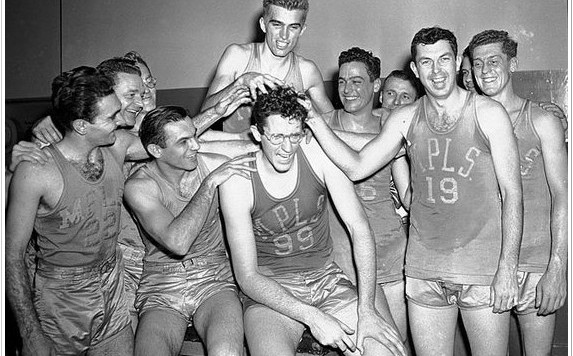Eighty-eight years ago today George Mikan was born in Joliet, Illinois. Everyone who has played the game in any sort of organized fashion knows the name because a) he was a great player, and b) there is a drill named after him. And until recently there was even a website – the Mikan Drill – which covered college basketball X’s and O’s.
Mikan was an icon, playing in coke-bottle glasses, who re-defined the role of the big man in basketball. He’s in the Hall of Fame, was named one of the NBA’s 50 greatest players, and has a statue outside of the arena in Minnesota.
So what in the world is the Mikan Drill, and how did it come to be?
George Mikan arrived at Depaul in 1942 at the same time as a 28-year-old rookie head coach named Ray Meyer. Meyer – who is also enshrined in the Naismith Hall of Fame – could see that basketball was a big man’s game. So he recruited the gawky, shy Mikan, who would end up 6-10, 245 pounds. He spent most of his time working on Mikan’s psyche – turning him from a shy introvert off the court to an aggressive intimidator on the court – but he also taught him how to score.
In practice, Meyer stuck Mikan beneath the basket and had him make a right handed layup. As he came down he’d rebound the ball, use proper footwork to get to the other side of the lane, and then leap again for a left handed layup. Rebound. Footwork. Layup. Rebound. Footwork. Layup.
The Mikan Drill.
That drill, along with working a punching bag and taking dancing lessons, allowed Mikan to become confident in his height. He still looked awkward with his thick glasses, but on the court he dominated. His goal-tending was so prodigious that the NCAA outlawed it. He was a 3-time All-American and a two-time Player of the Year.
Here’s the drill:























